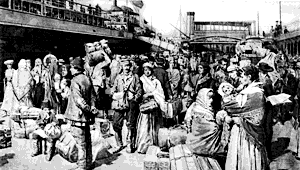
GISW
GLOBAL INSTITUTE OF SOCIAL WORK

Board of Directors and Volunteers at the GISW AGM 2016: Back row (LtoR): Terence Yow, Sim Gim Guan, Tan Ngoh Tiong, David Ong, Vicky Tan, Koh Juat Muay. Front Row: S. Vasoo, Ang Bee Lian, Arthur Tan, Elena Lui, Teo Mui Wan

CSD2015 Conference: Opening Plenary with Keynote Speaker Dr Noeleen Heyzer and Guest of Honour: DPM Tharman Shanmugaratnam

The International Federation of Social Workers is holding a competition to design the 2017 World Social Work Day Poster. The competition is open to anyone including people that use social work services, students, social workers and any one else.

Board of Directors and Volunteers at the GISW AGM 2016: Back row (LtoR): Terence Yow, Sim Gim Guan, Tan Ngoh Tiong, David Ong, Vicky Tan, Koh Juat Muay. Front Row: S. Vasoo, Ang Bee Lian, Arthur Tan, Elena Lui, Teo Mui Wan
Vision &
Mission
The vision of The Global Institute of Social Work (GISW) is to deliver quality social work training wherever in the world it is needed the most. Our goal is to provide readily available, cost-effective, and culturally appropriate training in various fields of social work.
1880-1900
A New Idea
In the late 1880s, a new type of philanthropic organization appeared. The settlement movement, as it came to be called, was a new approach to the problems of the city and its poor, and it focused mostly on new immigrants.
America's largest cities were largely composed of an amalgamation of new Americans representing virtually every country in the world. Immigrants were drawn to the cities to the thousands of flourishing new industries that needed workers. Overcrowding, sanitation and simple assimilation posed unique and overwhelming problems to those concerned about the nation's general welfare.
Many leaders were especially concerned about the future of democracy and the democratic spirit as America became less and less a nation of farmers from north-western Europe. In this context there arose a new kind of charitable activity focused on improving the immigrants' circumstances and grounded in the spirit of democracy.
Settlements focused more on the causes of poverty than the flaws of the poor. Consequently, they sought to reform aspects of American society that they identified as problematic. Instead of focusing their efforts on changing the individual behaviors and values of the poor, settlement workers tried to change the neighborhoods and expand opportunities for working class people who were poor, but not indigent. The entry of the settlements and their residents in low-income immigrant neighborhoods brought new attitudes and perspectives to the charity field.
The Settlement Idea
The settlement movement had roots in earlier American charities and urban missions. However, like the charity organization societies, they were directly tied to a similar movement in England. The first settlement house, Toynbee Hall, was established in 1884. It was located in the slums of London. Founded by Samuel Barnett and John Ruskin, Toynbee Hall was established to help bridge the gap between London's rich and poor. The Toynbee model provided a residence where university men settled. This provided an outpost of culture and education in the poverty neighborhood. The original organizers of Toynbee believed that university students could learn as much from the poor as the poor could learn from the university students.
A group of college-educated Americans visited Toynbee Hall in the mid-1880s. A few were sufficiently impressed that they created similar establishments in American cities. The American institutions were even more ambitious than their English models. In America the problems of urbanization and poverty were further complicated by the dynamics of mass immigration.
In 1886, Stanton Coit established a settlement house in New York (later to be known as University Settlement). In 1889, Vida Scudder opened another New York settlement staffed with recently graduated college women. In that same year, Jane Addams and Ellen Gates Starr began what was to become the most famous American settlement, Hull House.
These successes were quickly followed by others. Soon settlements were spread throughout urban America. By the mid 1890s there were fifty and by 1900 there were more than a hundred recognized settlements.

Immigrant ships provided few amenities

Arriving at Ellis Island

1880 Puck Magazine cartoon depicting current American thoughts on immigration

Toynbee Hall in London

Hull House
Adapted from socialworkhistorystation.org
Special thanks to the late Professor Dan Huff and Boise State University School of Social Work